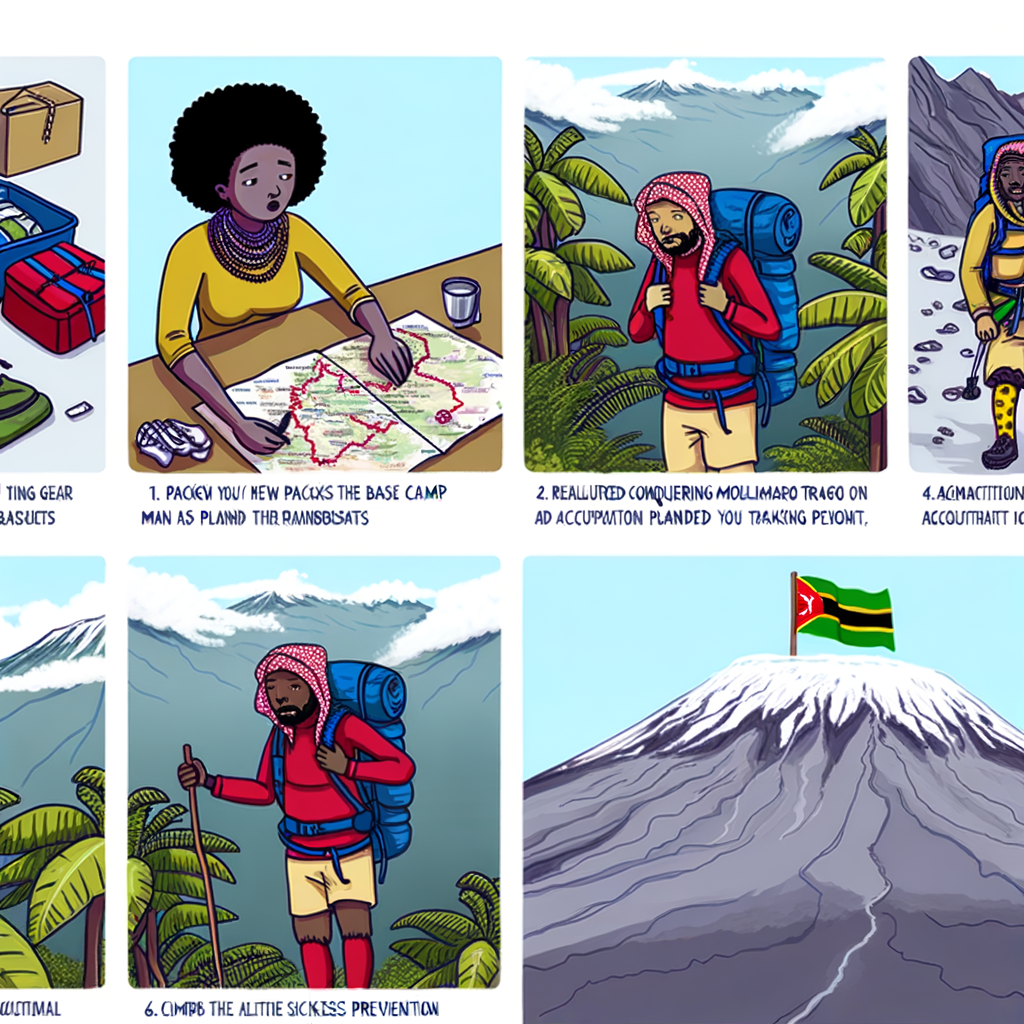Rising majestically from the East African plains, Mount Kilimanjaro beckons adventurers from around the globe to conquer its formidable peak. For those seeking the challenge of a lifetime, this step-by-step guide will help you navigate the daunting terrain, unpredictable weather, and physical demands of scaling Africa’s highest mountain. Join us on this epic journey as we break down the essential skills, equipment, and strategies needed to reach the summit of Kilimanjaro and stand on top of the world.
Planning Your Expedition
Before embarking on the journey to conquer Mount Kilimanjaro, it is essential to carefully plan every aspect of your expedition. From choosing the right route to packing the necessary gear, proper planning can make all the difference in achieving your goal of reaching the summit.
Start by researching the different routes available, such as the Marangu, Machame, and Lemosho routes, to determine which one best suits your fitness level and hiking preferences. Consider factors such as scenery, difficulty, and acclimatization opportunities when making your decision.
Next, create a detailed packing list of all the gear you will need for the trek. This should include essentials such as a sturdy pair of hiking boots, warm clothing layers, a sleeping bag, and plenty of snacks to keep you fueled along the way. Don’t forget to pack lightweight but high-energy food items like nuts, dried fruits, and energy bars to keep your energy levels up during the long days of hiking.
Physical Preparation for the Trek
In order to conquer the majestic Mount Kilimanjaro, it is essential to prepare your body physically for the challenging trek ahead. Here are some steps to help you get in shape for this incredible journey:
- Cardiovascular Training: Hiking at high altitudes requires a strong cardiovascular system. Incorporate activities such as running, cycling, or stair climbing to improve your endurance.
- Strength Training: Building strength in your legs, core, and upper body will help you tackle the steep slopes and rocky terrain of Mount Kilimanjaro. Include exercises like squats, lunges, and push-ups in your workout routine.
- Altitude Training: Since Mount Kilimanjaro reaches heights of over 19,000 feet, it is crucial to acclimatize your body to high altitudes. Consider spending time at high elevations or using altitude training masks to simulate the conditions.
Remember to listen to your body during training and gradually increase the intensity of your workouts to avoid injury. By preparing yourself physically, you will increase your chances of successfully summiting Mount Kilimanjaro and creating memories that will last a lifetime.
Navigating the Different Routes
When it comes to conquering Mount Kilimanjaro, there are several different routes to choose from, each offering its own unique challenges and experiences. From the popular Marangu Route to the more remote Northern Circuit, finding the right path for your trek is crucial to a successful summit. Below, we’ll break down the key characteristics of each route to help you navigate the options and make an informed decision.
Marangu Route
The Marangu Route, also known as the “Coca-Cola” route, is one of the most popular paths up Kilimanjaro. It is known for its comfortable sleeping huts and gradual slopes, making it a favorite among less experienced trekkers. While this route may be less challenging in terms of terrain, it can get crowded during peak season, so be prepared for company along the way.
Northern Circuit Route
For those seeking a more remote and less-traveled path, the Northern Circuit Route is an excellent choice. This route offers stunning views of the surrounding landscape and a more gradual ascent, allowing for better acclimatization. With fewer trekkers on this route, you’ll have a more peaceful and authentic Kilimanjaro experience.
Acclimatizing to High Altitudes
One of the most important factors to consider when conquering Mount Kilimanjaro is . The key to a successful summit is allowing your body enough time to adjust to the thin air and decreased oxygen levels as you ascend. Here are some essential steps to help you acclimatize effectively:
- Gradual Ascent: Take your time climbing to higher elevations, allowing your body to slowly adjust to the changing altitude.
- Stay Hydrated: Drink plenty of water to combat dehydration, which can exacerbate altitude sickness symptoms.
- Rest and Relax: Listen to your body and take breaks when needed to allow it to recover and adjust to the altitude.
- Eat Well: Fuel your body with nutritious meals to maintain your energy levels and support the acclimatization process.
| Altitude Level | Recommended Stay |
|---|---|
| 3,000 - 4,000 meters | 1-2 nights |
| 4,000 – 5,000 meters | 2-3 nights |
| Above 5,000 meters | 3-4 nights |
By following these tips and giving your body the time it needs to acclimate, you’ll increase your chances of successfully summiting Mount Kilimanjaro. Remember, safety should always be your top priority when climbing at high altitudes.
As you embark on your journey to conquer Mount Kilimanjaro, remember that every step you take brings you closer to new heights, both literally and metaphorically. The challenge may be immense, but the rewards are even greater. From the stunning views at the summit to the sense of accomplishment that comes with reaching the peak, this adventure will stay with you long after you return home. So lace up your boots, take a deep breath, and start climbing towards your own personal summit. The journey may be tough, but the view from the top is always worth it. Happy trails, and may your spirit soar as high as the highest peak in Africa.
